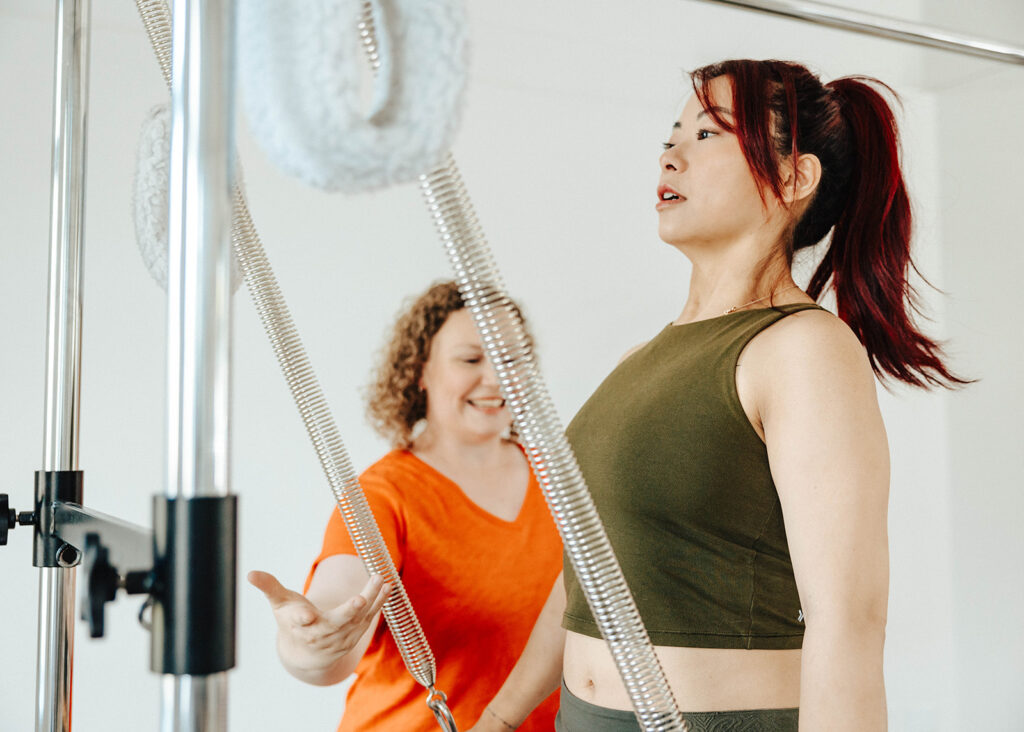What is Toggling?
Toggling is a skill that is very important in both sports and rehabilitation. Think of it like switching between two open windows on your computer. You check one, then flip back to the other as needed. We do this with our attention all the time.
For example, when driving, you look forward, signal, check your side mirror, shoulder check, and then return your focus to the road ahead. The world in front of you keeps moving, but you briefly shift your attention to gather more information before returning to the main task.
Toggling in Sport
Athletes use toggling constantly. Imagine waiting for a serve in tennis: you watch the server, then shift your attention to the ball, then glance at your opponent’s position. When you make contact with the ball, you already know where they are, and can place your shot strategically.
Try picturing running down a soccer pitch. You know your legs feel tired, but you’re also tracking the ball and your opponents. We think “Hmm, my legs are tired, but I have enough energy to run faster or kick this ball right now, and I’ll still have enough energy in the tank for later.” Toggling is the back and forth of checking in on our environment, ourselves, our body, and back to the situation.
Toggling in Physiotherapy and Pilates
Clients also practice toggling in rehab settings. In a Pilates class, you might hear: “Press into the bar, lengthen your back, take a breath in, now drive forward into a bend.”
Your brain has to toggle between multiple cues: the feel of the bar, the stretch of your back, your breath, and the movement itself.

Sometimes it’s harder, for example, when an instructor says, “Turn on your glutes, push through the bar, and squeeze your heels.” Your focus shifts to your glutes, but if that “window” isn’t easily accessible in your brain, you’re thinking, “I know I have this tab open somewhere… where is it?” Now, the instructor has already moved on to the next cue of squeezing your heels. You might just ignore the cue and come back to it later, or you might get distracted looking for this connection and miss further instructions. This is why practicing toggling is so valuable.
Exercises to Practice Toggling
You can train toggling outside of sport or class. Here are a couple of ways to practice:
Exercise 1: Fingers and Toes
- Sit comfortably or lie down. Place your hands on your lap or in front of you.
- With eyes open, wiggle your right index finger, then your left. Then, look back and forth between them. (Stop if you feel dizzy and check with your physiotherapist or allied health professional.)
- Repeat with eyes closed, shifting your focus back and forth. It’s often harder without vision, practice moving awareness as quickly as you can, one finger then the other.
- Wiggle your right, then left big toe. Try again with eyes open, then closed.
- Shift your focus back and forth between toes without wiggling eyes open, then eyes closed.
- Move from right index → right toe → left index → left toe. Notice if one side feels easier or harder.
Tip: This works because our brains often “favour” certain areas (like your dominant hand) or avoid areas linked to pain. Training awareness helps balance how your brain maps your body.
Exercise 2: Strong vs. Weak Window
- Choose one body part you can easily sense (e.g. your dominant hand) and one that’s harder (e.g. an injured knee).
- Place your dominant hand on the harder-to-find area. With eyes closed, toggle your attention between your hand and the body part beneath it.
- Remove your hand and try again, noticing if it’s harder without the tactile cue.
Tip: Most people find it easier when the hand is touching, but with practice, you can usually toggle without it too.
Bringing It Into Daily Life
These exercises are perfect to try before a workout, while waiting for a class to start, before bed, or even during that long, boring meeting later this week.
If you’d like tips on progressing these exercises or making them more tailored to your needs, reach out to us. We’d be happy to book you with one of our knowledgeable physiotherapists.